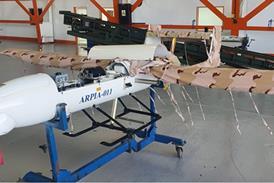David Learmount/LONDON
An accident involving controlled flight into terrain (CFIT) in instrument meteorological conditions (IMC), is most likely to happen to a single-crew operation in Africa flying a non- precision approach without a ground-proximity warning system (GPWS) says a so-far-unreleased report which quantifies CFIT risks.
Set to appear in a special issue of the Flight Safety Foundation's (FSF) Flight Safety Digest, the report was researched by the Netherlands National Aerospace Laboratory (NLR) for the Netherlands Civil Aviation Authority.
The report finds that almost 40% of all the approach/landing-phase accidents occur in areas with no significant terrain features near the airfield.
The NLR study looked at 156 accidents worldwide involving major airlines, regional carriers and air-taxi operators, from 1988 to 1994, inclusive. In the case of major carriers, the report finds that those operating in the International Civil Aviation Organisation (ICAO) African region face the highest risk, at 0.7 CFIT accidents per million departures. The per-million rates for other ICAO regions are: South America, 0.63; Asia/Pacific, 0.57; and Europe, 0.27. The Middle East and North America show a virtually zero rate.
The report concludes that:
a total of 75% of the 108 aircraft for which equipment data are available were not fitted with a GPWS. Almost all the 27 aircraft, which were fitted with GPWS, belonged to major operators, but in just over three-quarters of those cases the equipment was "early Mark I and II types". In 33% of the early-GPWS cases, no warning was generated;
aircraft in categories not required under ICAO rules to carry GPWS (large aircraft flying domestically and aircraft less than 5,700kg take-off weight on any flight) made up 71% of the accident total; among the lighter-aircraft accidents, 70% involved aircraft not required to carry the GPWS even under proposed tighter ICAO rules;
for major airlines, the risk of a CFIT accident on scheduled international flights is 3.8 times higher than for domestic routes;
procedural errors, poor situational awareness and tactical decision mistakes are the dominant categories of aircrew-error. Where CFIT occurs during the approach phase, "virtually all" the accidents, involves lack of situational awareness by the crew;
descent and final-approach phases accounts for 70% of CFIT accidents, en route for 20%. Almost 90% of the approach-and-landing phase accidents hit within 25km of the runway threshold. Of the en route CFIT events, 93% involved air taxi and regional operators.
Source: Flight International























